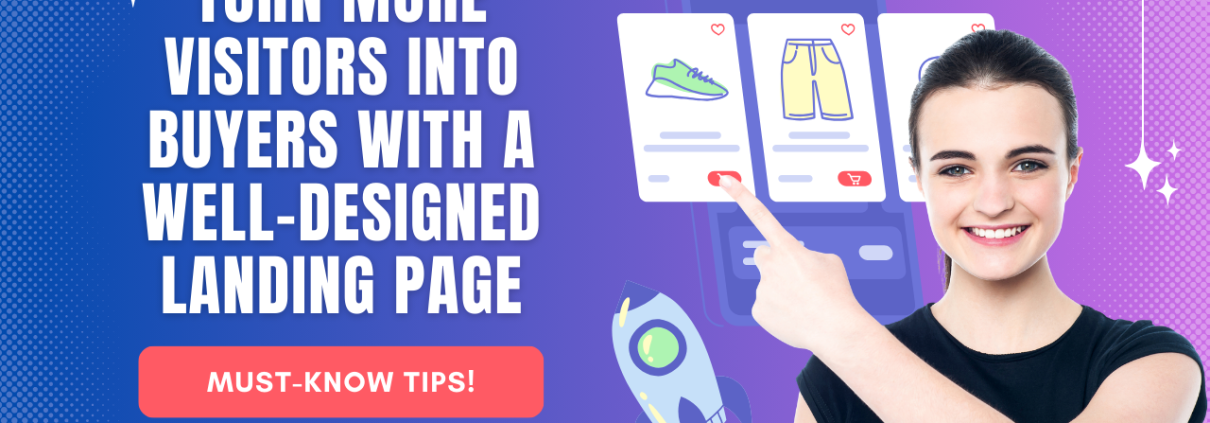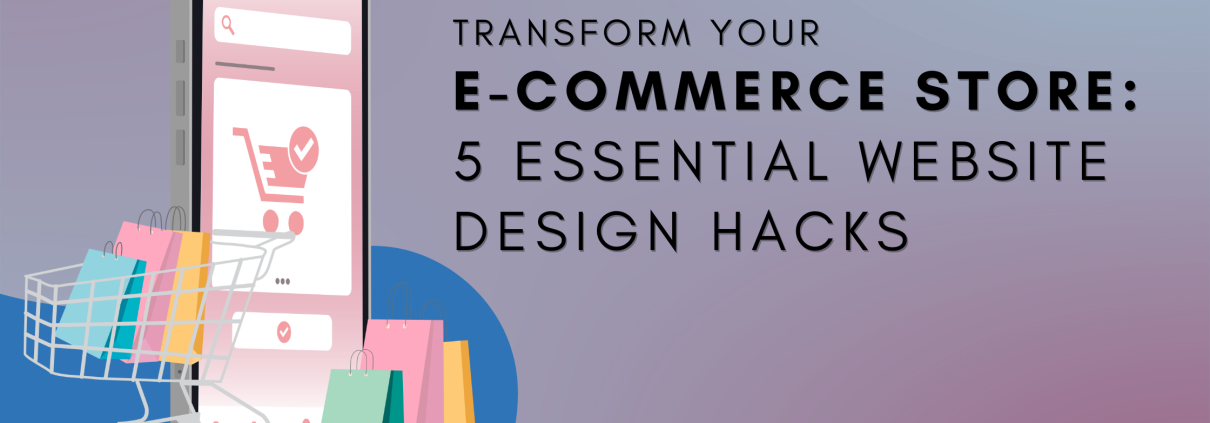How a Well-Designed Landing Page Can Boost Conversions
In today’s competitive digital landscape, having a well-designed landing page is crucial for e-commerce brands aiming to turn visitors into paying customers. A landing page acts as a powerful tool to capture leads, showcase products, or promote offers, driving higher conversion rates. But how exactly does a well-designed landing page boost conversions? In this blog post, we’ll explore the key elements of a high-converting landing page and why investing in design is essential for your brand’s success.
1. First Impressions Matter
Your landing page is often the first interaction potential customers have with your brand. Within seconds, visitors form an opinion based on the design, content, and overall user experience. A well-designed landing page creates a positive first impression by:
- Offering a clean and professional design.
- Ensuring fast loading speeds to avoid frustration.
- Clearly communicating your value proposition with compelling headlines and visuals.
When visitors trust the professionalism of your page, they’re more likely to engage, which can directly boost conversions.
2. Clear, Focused Call-to-Actions (CTAs)
A high-converting landing page focuses on a single objective — whether that’s making a purchase, signing up for a newsletter, or downloading a free guide. Well-designed CTAs guide the user through this process, making it clear what action they need to take next. Here’s how a well-designed landing page boosts conversions with effective CTAs:
- Use action-oriented language like “Get Started Now” or “Claim Your Free Offer.”
- Make CTAs visually stand out with contrasting colors.
- Ensure that the CTA buttons are above the fold so users don’t have to scroll.
By having a clear, focused CTA, your landing page will drive more engagement and ultimately boost your conversion rates.
3. Compelling Copy That Speaks to Your Audience
Design is only half of the equation; the words on your landing page play a critical role in driving conversions. Your copy needs to resonate with your target audience by addressing their pain points and presenting your offer as the solution. Effective landing page copy includes:
- A clear and concise headline that grabs attention.
- Benefits-focused subheadings that highlight the value of your offer.
- Testimonials or social proof to build trust and credibility.
- A sense of urgency or exclusivity, like limited-time offers, to encourage immediate action.
When copy aligns with the design, the well-designed landing page boosts conversions by delivering a consistent message that speaks directly to user needs.
4. Mobile Optimization
With over half of internet users browsing on mobile devices, ensuring your landing page is fully optimized for mobile is essential. A well-designed landing page that is mobile-friendly:
- Improves the user experience for mobile visitors.
- Reduces bounce rates, leading to higher conversions.
- Ensures that forms and buttons are easy to navigate on smaller screens.
By neglecting mobile optimization, you risk losing out on a significant portion of potential conversions. A mobile-optimized landing page ensures you capture leads across all devices, further boosting conversions.
5. Visual Elements That Enhance, Not Distract
Visuals play a crucial role in grabbing attention and reinforcing your message. However, poorly chosen or excessive visuals can distract from your goal. To use visuals effectively, consider:
- Including high-quality images or videos that are relevant to your offer.
- Using minimalist design principles to avoid clutter and overwhelm.
- Ensuring that visual elements complement your CTA and copy.
For e-commerce brands, showcasing product images or demonstration videos can help customers visualize the benefits, making them more likely to convert. By using visuals strategically, your well-designed landing page will boost conversions by keeping users focused and engaged.
6. Fast Load Times Improve Conversions
Page speed is a crucial factor when it comes to conversion rates. In fact, studies show that even a one-second delay in page load time can reduce conversions by 7%. To keep visitors engaged and converting, you should:
- Compress images to reduce file sizes.
- Use fast, reliable hosting services.
- Limit the use of unnecessary scripts or plugins that could slow down your page.
A well-designed landing page with fast load times ensures that visitors have a smooth experience, keeping them on your site longer and increasing the likelihood of conversion.
7. Social Proof Builds Trust
Trust is key to increasing conversions, especially for new customers. A well-designed landing page often includes social proof elements like:
- Customer reviews and testimonials,
- Case studies showcasing successful results,
- Trust badges or certifications,
- User-generated content such as photos or videos.
Social proof reassures potential buyers that your product or service delivers on its promises. By incorporating these elements into your design, your landing page can boost conversions by building credibility with visitors.
8. A/B Testing for Continuous Improvement
Even the best-designed landing pages need continuous improvement. A/B testing allows you to compare different versions of your landing page to see which design elements, copy, or CTAs perform best. Regular testing can help you:
- Identify what resonates with your audience.
- Optimize conversion rates over time.
- Stay ahead of competitors by constantly improving user experience.
A well-designed landing page boosts conversions through continuous optimization. Testing small changes, such as button colors or headline wording, can lead to significant boosts in your conversion rates.
Conclusion: Boost Conversions with the Right Landing Page Design
A well-designed landing page is one of the most effective ways to boost conversions for your e-commerce business. By focusing on a clean design, strong CTAs, engaging copy, mobile optimization, fast load times, and A/B testing, you can turn visitors into customers. Whether you’re running paid advertising campaigns or driving organic traffic, investing in a high-converting landing page will lead to long-term growth and success for your brand.
Need help designing a high-converting landing page for your business? Contact us today and discover how we can boost your conversions with proven strategies and expert design!

